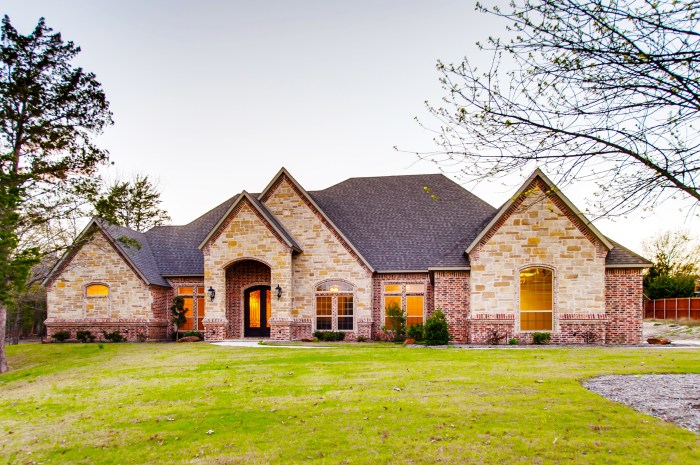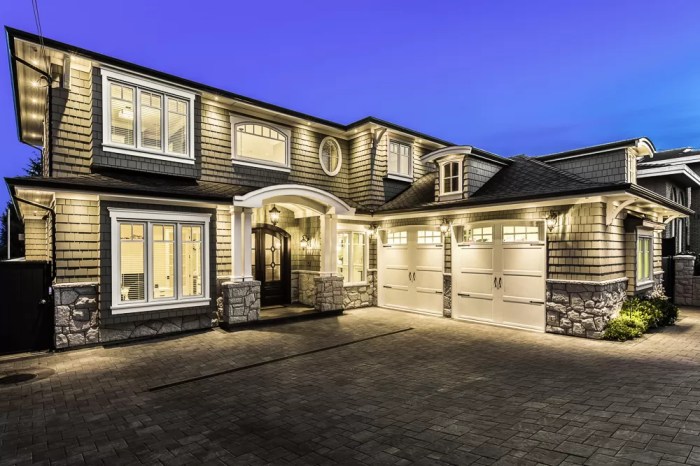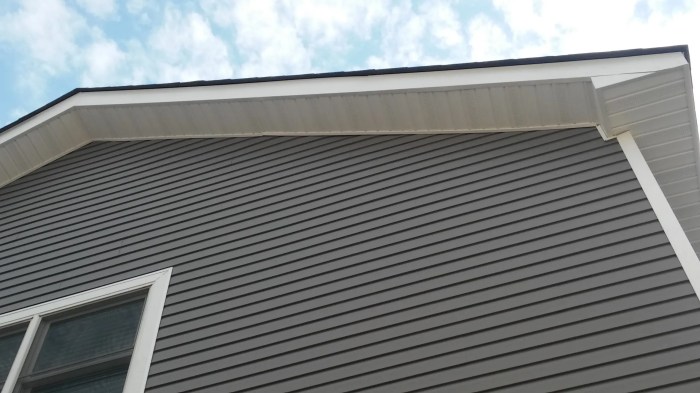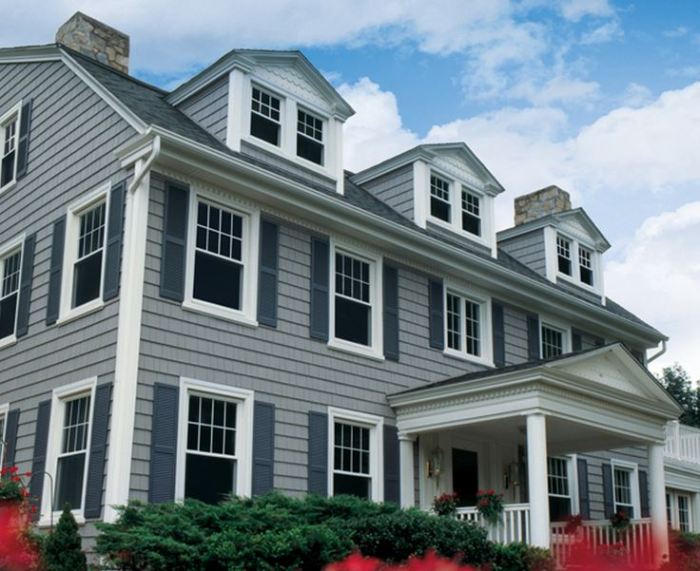Crafting a Natural Wood Siding House: A Comprehensive Guide
Immerse yourself in the world of natural wood siding houses with this detailed guide. From the characteristics of natural wood siding to its installation and environmental impact, this topic delves into every aspect you need to know.
Discover the beauty and functionality of natural wood siding as we explore its benefits, types of wood used, and popular designs that will inspire your next home project.
Overview of Natural Wood Siding House
Natural wood siding offers a timeless and classic look to a house, enhancing its aesthetic appeal and blending seamlessly with the surrounding environment. It is a popular choice among homeowners for various reasons.
Characteristics of Natural Wood Siding
- Durable and long-lasting if properly maintained.
- Provides natural insulation, helping to regulate indoor temperatures.
- Offers a unique and authentic appearance that can be customized through different finishes.
Benefits of Using Natural Wood Siding
- Enhances curb appeal and adds value to the property.
- Environmentally friendly as wood is a renewable resource.
- Allows for easy repairs and replacements of damaged sections.
Types of Wood Commonly Used for Siding
- Cedar: Known for its natural resistance to decay and insects.
- Pine: Affordable option with a warm, natural look.
- Redwood: Durable and naturally resistant to rot and decay.
Popular Natural Wood Siding House Designs
Examples of popular natural wood siding house designs include:
- Cape Cod: Featuring cedar shingles that give a coastal feel.
- Craftsman: Showcasing detailed woodwork and earthy tones.
- Modern Farmhouse: Combining wood siding with metal accents for a contemporary look.
Installation and Maintenance
Installing natural wood siding on a house requires careful attention to detail and proper techniques to ensure a durable and visually appealing finish. Regular maintenance is also crucial to protect the wood from the elements and prolong its lifespan.
Installation Process
- Prepare the surface: Ensure that the surface where the wood siding will be installed is clean, dry, and free of any debris or existing paint.
- Choose the right type of wood: Select a high-quality wood species that is suitable for exterior use and has natural resistance to rot and insects.
- Measure and cut the siding: Accurately measure and cut the wood siding panels to fit the dimensions of the house, leaving room for expansion and contraction.
- Install the siding: Begin by attaching the siding panels to the exterior walls using nails or screws, following the manufacturer's guidelines for spacing and fastening.
- Seal and finish: Apply a protective sealant and finish to the wood siding to enhance its resistance to moisture, UV rays, and other environmental factors.
Maintenance Tips
- Regular cleaning: Periodically wash the wood siding with a mild detergent and water to remove dirt, dust, and mildew.
- Inspect for damage: Regularly inspect the wood siding for signs of rot, decay, or insect infestation, and address any issues promptly.
- Reapply sealant: Every few years, reapply a fresh coat of sealant and finish to maintain the wood's protective barrier against the elements.
- Trim vegetation: Keep vegetation trimmed back from the wood siding to prevent moisture buildup and reduce the risk of mold and mildew growth.
Environmental Impact and Sustainability
Natural wood siding offers several ecological benefits due to its sustainability and environmental impact. Wood is a renewable resource that can be sourced from responsibly managed forests, making it a more environmentally friendly option compared to other siding materials.
Eco-Friendly Benefits of Natural Wood Siding
- Wood is a renewable resource that can be sustainably harvested.
- Forests help absorb carbon dioxide from the atmosphere, reducing greenhouse gas emissions.
- Wood siding can be recycled or repurposed at the end of its lifespan.
Comparison of Sustainability
- Natural wood siding has a lower environmental impact compared to materials like vinyl or aluminum siding.
- Wood siding requires less energy to produce and has a lower carbon footprint.
- Wood siding is biodegradable and does not release harmful chemicals into the environment.
Carbon Footprint of Wood Siding Production
Wood siding production has a relatively low carbon footprint compared to other siding materials. The carbon dioxide emissions associated with harvesting, processing, and transporting wood are offset by the carbon sequestration of forests. Additionally, advancements in sustainable forestry practices and wood treatment technologies have further reduced the environmental impact of wood siding production.
Design and Aesthetics

When it comes to enhancing the curb appeal of a house, natural wood siding can make a significant impact. The warmth and natural beauty of wood can create a welcoming and timeless look that adds character and charm to any home.
Various Design Options and Patterns
Natural wood siding offers a wide range of design options and patterns to choose from, allowing homeowners to customize the look of their homes according to their preferences. Some popular choices include:
- Horizontal clapboard
- Vertical board and batten
- Shingle or shake siding
- Log cabin style
Incorporating Wood Siding into Modern or Traditional Architecture
Whether you have a modern or traditional architectural style, natural wood siding can complement and enhance the overall design of your home. For modern homes, sleek horizontal clapboard siding can add a touch of warmth and texture, while traditional homes can benefit from the timeless appeal of vertical board and batten or shingle siding.
Mixing different siding styles can also create a unique and custom look that blends seamlessly with the architectural elements of your home.
Closing Summary
In conclusion, natural wood siding offers a timeless appeal and eco-friendly advantages for your home. Whether you're drawn to its aesthetic charm or sustainable qualities, embracing natural wood siding can transform your house into a warm and inviting sanctuary.
FAQ Guide
How do I maintain natural wood siding?
To maintain natural wood siding, regularly clean it with a mild detergent and water, inspect for any damage, and reapply sealant or finish as needed.
What are the common types of wood used for siding?
Cedar, redwood, pine, and spruce are commonly used types of wood for siding due to their durability and aesthetic appeal.
Is natural wood siding environmentally friendly?
Yes, natural wood siding is environmentally friendly as it is a renewable resource and has a lower carbon footprint compared to other siding materials.




